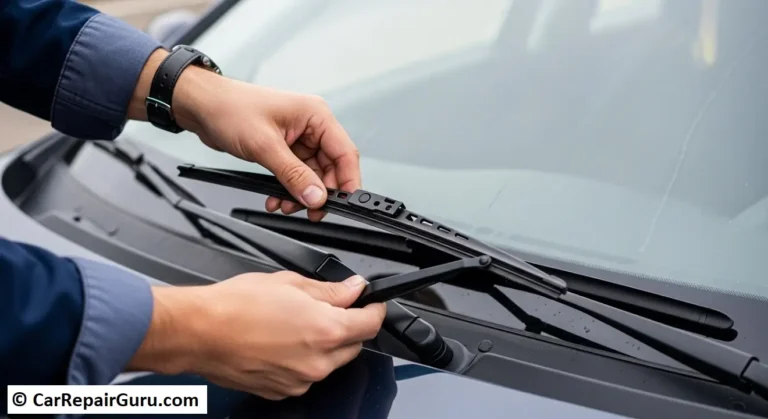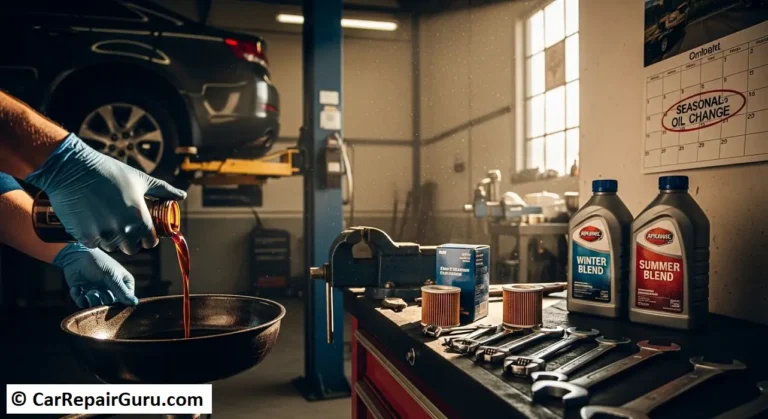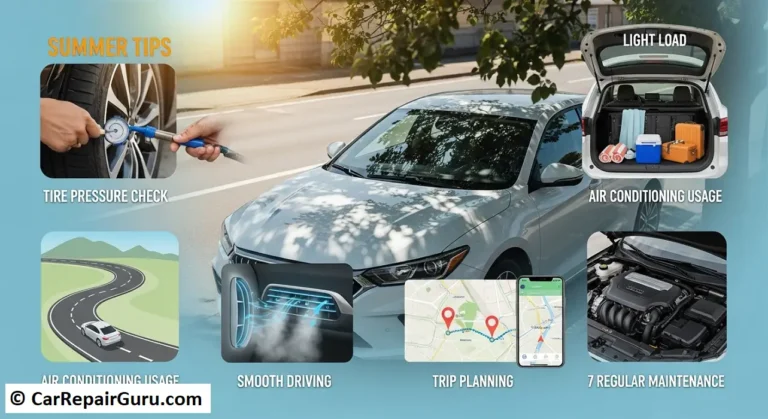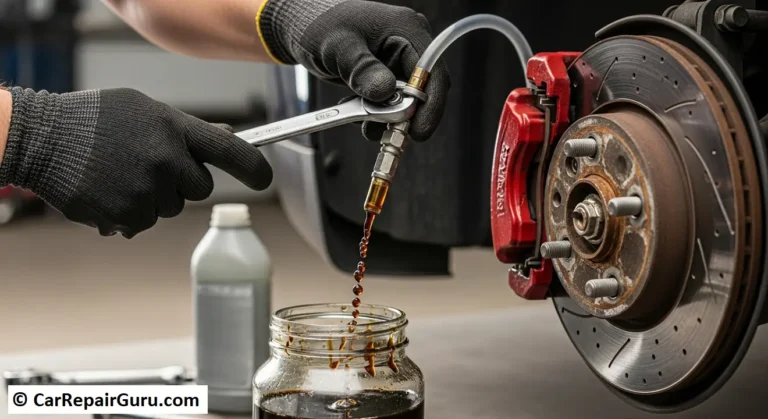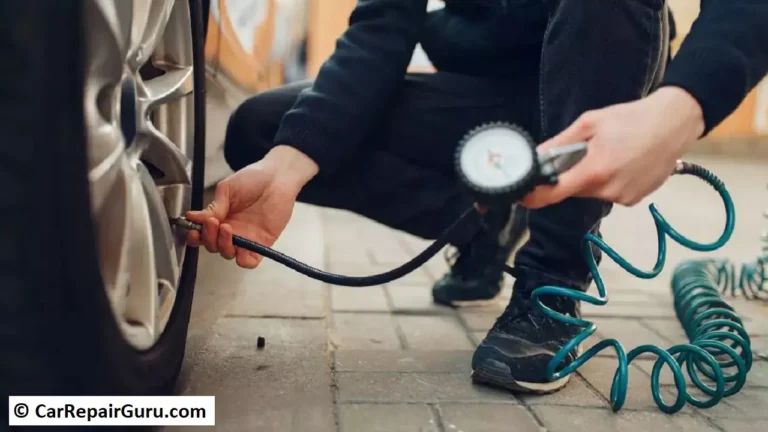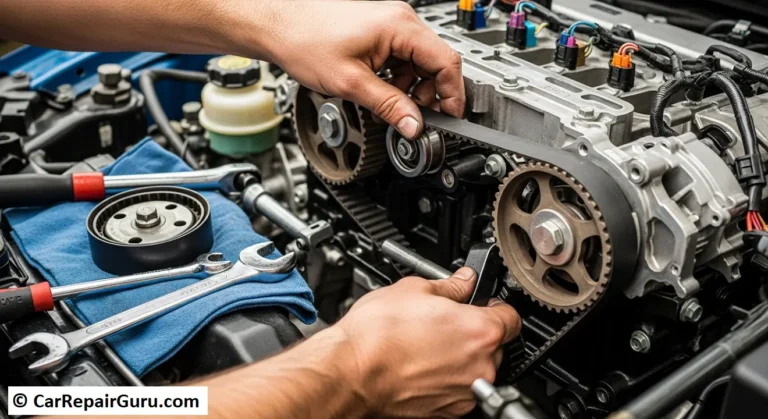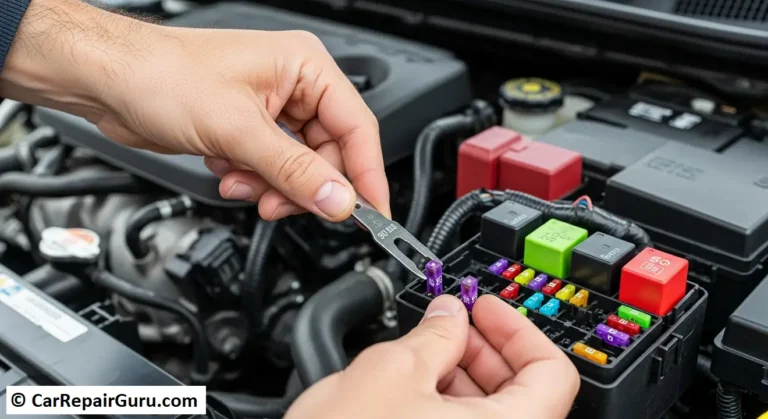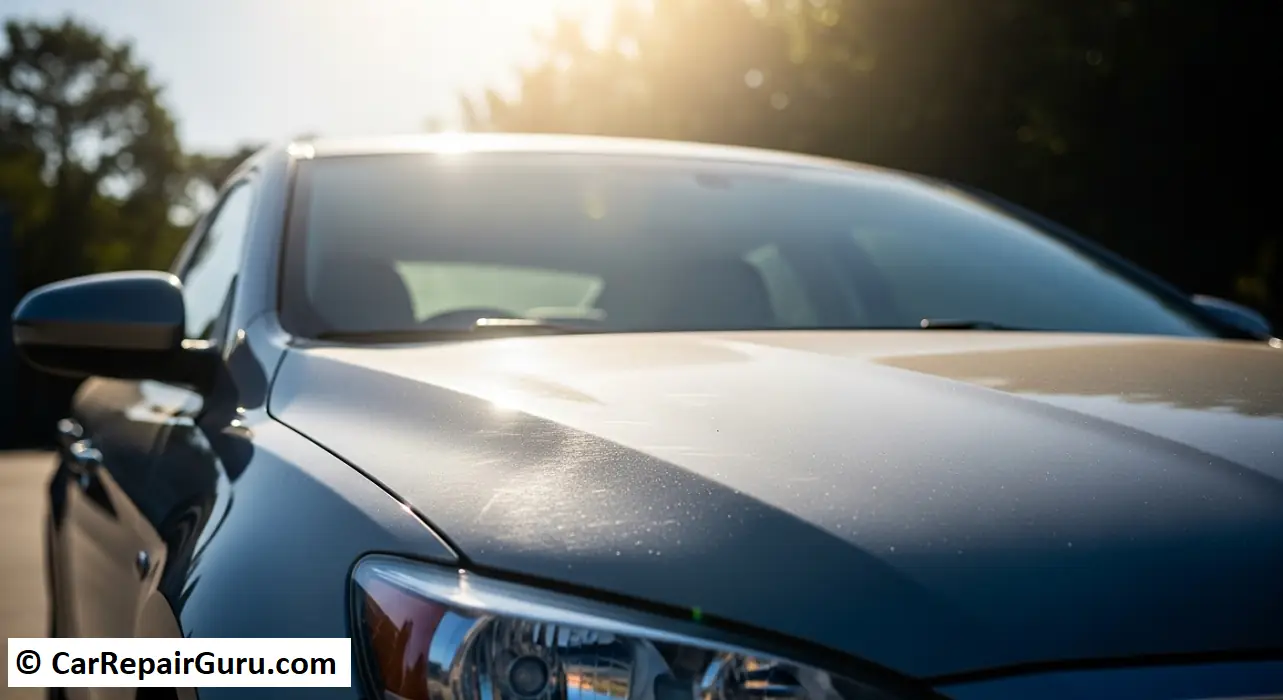
We’ve all been there. You walk out to your car on a bright, sunny day, and you can’t help but admire the way its color shines. A car isn’t just a machine that gets you from A to B; it’s a reflection of you, a significant investment, and a source of pride. But that same sun you’re enjoying is locked in a constant battle with your car’s finish.
Day after day, the sun’s relentless ultraviolet (UV) rays and intense heat are working to break down your car’s paint, transforming its deep, glossy shine into a dull, faded, and chalky mess. This isn’t just a cosmetic issue—it’s an attack on your car’s protective shell and its long-term value.
But don’t worry. You don’t have to surrender to the sun. Protecting your car’s paint is easier than you think, and it doesn’t always require expensive professional services. This guide will walk you through everything you need to know, from simple daily habits to advanced protective technologies, to keep your car looking showroom-new for years to come.
Why Is Protecting Your Car’s Paint From the Sun So Important?
Before we dive into the “how,” let’s quickly understand the “why.” Knowing what’s happening on a microscopic level will help you appreciate the importance of these protective steps. Think of your car’s paint job as a multi-layer system. The vibrant color you see is actually protected by a transparent top layer called the clear coat. This clear coat is like sunscreen for your paint.
Here’s how the sun wages its war:
- UV Ray Bombardment: The sun emits powerful ultraviolet rays. These invisible rays are the primary culprit behind paint fading. They penetrate the clear coat and break down the chemical bonds in the paint’s pigment underneath. Over time, this molecular damage causes the color to lose its vibrancy. Reds are notoriously susceptible to fading into pink, and deep blacks can turn into a hazy gray.
- The Scourge of Oxidation: Heat from the sun acts as a catalyst, accelerating a chemical reaction between the oxygen in the air and your car’s paint. This process, known as oxidation, primarily attacks the clear coat. The first sign is a loss of gloss. If left unchecked, the clear coat will begin to look hazy or milky, eventually breaking down completely and creating a rough, chalky texture.
- Preserving Your Resale Value: Let’s be practical—a car with a gleaming, well-maintained paint job is worth significantly more than one that’s faded and peeling. When it comes time to sell or trade in your vehicle, its cosmetic condition is one of the first things a buyer or appraiser will notice. Investing a little time and effort now to protect your car paint from the sun is one of the smartest financial decisions you can make as a car owner.
The 7 Core Methods for Protecting Your Car’s Paint
Now for the battle plan. These seven methods range from free daily habits to long-term investments. Combining a few of them will create a powerful defense against sun damage.
A. Daily & Preventative Solutions (Easy & Inexpensive)
1. Park in the Shade
This is the single most effective, simplest, and cheapest way to protect your car. It’s a no-brainer. Every time you park, make a conscious effort to find a spot that offers cover.
- Best Option: A garage or a covered carport. This provides complete protection from direct sunlight.
- Good Option: A multi-level parking garage or the shadow of a tall building.
- Decent Option: Under a tree. While this provides excellent shade, be mindful of bird droppings, sap, and falling debris, which can cause their own type of paint damage. It’s a trade-off, but it’s still better than direct sun.
2. Use a High-Quality Car Cover
If you don’t have access to a garage, a car cover is your next best friend. It’s like a portable garage that shields your entire vehicle from UV rays, dust, and other environmental fallout. However, not all covers are created equal.
- Look for Breathability: Avoid cheap, non-breathable plastic tarps. They can trap heat and moisture underneath, which can cook your paint and even lead to mold growth.
- Ensure UV Protection: A good cover will specifically advertise its UV-resistant properties.
- Get a Soft Inner Lining: To prevent fine scratches, choose a cover with a soft, non-abrasive lining, like fleece or cotton. Always make sure your car is clean before putting the cover on to avoid grinding trapped dirt into the paint.
B. Regular Washing & Maintenance
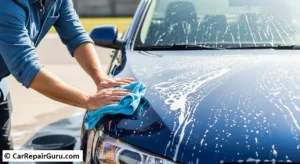
3. Wash Your Car Frequently
A clean car is a protected car. Contaminants like dust, bird droppings, bug splatter, and industrial fallout don’t just look bad; they are harmful. When baked by the sun, their acidic properties are amplified, and they can chemically etch into your clear coat, creating permanent spots. Washing your car every one to two weeks removes these threats before they can do real damage.
4. Dry Your Car Thoroughly
Have you ever noticed those stubborn little white spots on your car after it air-dries? Those are water spots, caused by mineral deposits left behind as water evaporates. In the sun, each water droplet acts like a tiny magnifying glass, focusing the sun’s rays and intensifying the heat on that one spot. This can bake the minerals into your clear coat. Always dry your car completely after washing using a clean, soft microfiber drying towel to absorb the water safely.
C. Advanced Protective Layers
This is where you apply a sacrificial barrier between the sun and your paint.
5. Apply Car Wax
Waxing is the classic, time-honored method of paint protection. A quality car wax, especially one made from natural carnauba, creates a thin, protective layer that sits on top of your clear coat. It enhances gloss, makes the surface slick, and most importantly, it acts as a sacrificial barrier that absorbs UV radiation so your paint doesn’t have to. The wax layer degrades over time instead of your clear coat.
- Lifespan: Typically 2-3 months.
- Best For: Car enthusiasts who enjoy the process of regular maintenance and want a deep, warm glow.
6. Use a Paint Sealant
Paint sealants are the modern, synthetic evolution of car wax. They are engineered polymers that are designed to do the same job as wax but better and for longer. A sealant chemically bonds to your car’s paint, creating a more durable and longer-lasting shell of protection. They often provide a sharper, more glass-like shine compared to the warm glow of wax.
- Lifespan: Typically 4-6 months, sometimes longer.
- Best For: The practical car owner who wants excellent, long-lasting sun protection wax without having to reapply it every other month.
7. Invest in a Ceramic Coating
This is the pinnacle of modern paint protection. A ceramic coating (or nano-ceramic coating) is a liquid polymer that, when applied, chemically bonds with your car’s clear coat, curing into an incredibly hard, durable, and transparent layer of protection. It’s essentially a second, much stronger clear coat.
Benefits of a ceramic coating include:
- Extreme Durability: It can last for years, not months.
- Superior UV Resistance: It provides the best possible defense against fading.
- Chemical Resistance: It protects against etching from bird droppings and bug guts.
- Hydrophobic Properties: It repels water and dirt, making the car dramatically easier to clean.
While it’s the most expensive option, especially if professionally installed, a ceramic coating offers unparalleled peace of mind and long-term car body protection.
Beyond the Paint: Protecting Other Exterior Parts from the Sun
The sun doesn’t just attack your paint. To keep your whole car looking great, pay attention to these often-neglected areas.
Plastic & Vinyl Trim: The black and gray plastic trim around your bumpers, mirrors, and windows is highly susceptible to UV damage. The sun leeches the oils out of the plastic, causing it to fade to a chalky gray and become brittle. Use a dedicated, high-quality trim restorer or protectant that contains UV blockers to keep these parts looking dark and rich.
Headlights and Taillights: Modern headlights are made of polycarbonate plastic, which oxidizes and turns yellow and cloudy over time. This is not only ugly but also a serious safety hazard, as it dramatically reduces light output. You can prevent headlight yellowing by regularly applying a UV-blocking headlight sealant. Some detailers even apply ceramic coatings to headlights for multi-year protection.
Tires: UV radiation dries out the rubber in your tires, leading to discoloration and, more dangerously, the formation of fine cracks in the sidewall. A quality, water-based (not greasy silicone) tire dressing will not only make your tires look clean but will also nourish the rubber and provide a protective UV barrier.
Sun Protection Myths vs. Reality: What You Need to Know
There’s a lot of misinformation out there. Let’s clear up a few common myths.
- Myth #1: “Parking in the shade is a complete solution.”
- Fact: It’s a fantastic first step, but it’s not foolproof. UV rays can still reflect off the ground and other surfaces, causing ambient exposure. Shade drastically reduces the damage but doesn’t eliminate it entirely. It should be combined with a protective layer like wax or a sealant for best results.
- Myth #2: “Dark-colored cars are the only ones that get sun damage.”
- Fact: While damage is more obvious on dark colors because they absorb more heat and show fading more dramatically, all paint colors are vulnerable. In fact, certain pigments, like red and yellow, break down faster under UV exposure than others. No color is immune.
- Myth #3: “A cheap car cover will protect my car.”
- Fact: A cheap, non-breathable plastic cover can be worse than no cover at all. It can trap immense heat and moisture, effectively steaming your paint and creating a perfect environment for mildew. It can also scratch your finish. Investing in a quality, breathable cover is essential.
What If the Damage Is Already Done?
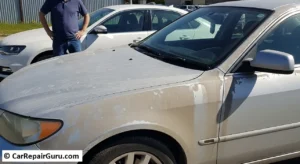
Perhaps you’re reading this a little too late, and your car is already showing signs of sun damage. Don’t panic; you may have options.
- For Minor Damage (Light Oxidation, Fading, Dullness): You can often restore the shine yourself. The process involves using a polish or a compounding agent. These products contain fine abrasives that gently remove the very top, damaged layer of your clear coat to reveal the fresh, glossy layer underneath. This is a process called “paint correction” and can yield amazing results.
- For Severe Damage (Cracking, Peeling Clear Coat): Unfortunately, once the clear coat begins to physically crack and peel, there is no way to fix it with polish or wax. The integrity of the paint system has failed. The only true solution at this point is to have the affected panel professionally sanded down and repainted.
Your Car’s Future is in Your Hands
Protecting your car’s paint from the sun isn’t a single action; it’s a commitment to a few simple, regular habits. It’s about making smart choices every time you park and investing in the right protection for your needs and budget.
By following the pillars of Parking Smart, Washing Often, and Shielding the Surface, you’re doing more than just keeping your car shiny. You’re preserving its beauty, protecting its integrity, and securing its value for the road ahead. Start today, and your car will thank you for it for years to come.
Frequently Asked Questions (FAQ)
What’s the best long-term sun protection for a car?
Without a doubt, a professionally installed ceramic coating offers the longest-lasting and most robust protection against UV rays, chemicals, and environmental contaminants, often lasting for several years.
How often should I wax my car in a hot, sunny climate like Arizona or Florida?
In extreme sun conditions, the lifespan of wax is shortened. You should aim to apply a fresh coat of high-quality wax every 6-8 weeks to ensure a consistent protective layer is present. A paint sealant would be a better choice, lasting 4-6 months.
Does rain wash away the sun’s harmful elements?
No. In fact, rainwater can be harmful. It contains airborne pollutants and minerals that, when the water evaporates, are left behind on your paint. This “acid rain” can etch your clear coat, and the mineral deposits create stubborn water spots. Rain is no substitute for a proper car wash.
Does the color of a car affect how much it’s damaged by the sun?
Yes, to an extent. Darker colors like black and navy blue absorb more light and heat, which can accelerate the oxidation process. Lighter colors like white and silver reflect more light and stay cooler. However, certain pigments, particularly reds and yellows, are chemically less stable and can fade faster, even on cooler surfaces. So, while dark cars show damage more obviously, no color is safe.
Should I also be worried about the sun damaging my car’s interior?
Absolutely. The sun’s UV rays stream through your windows and wreak havoc on your interior. They can fade and crack your dashboard, dry out leather seats, and discolor fabric upholstery. Using a windshield sunshade every time you park is a crucial habit. Window tinting (where legal) is another excellent way to block a significant amount of UV rays and heat.
